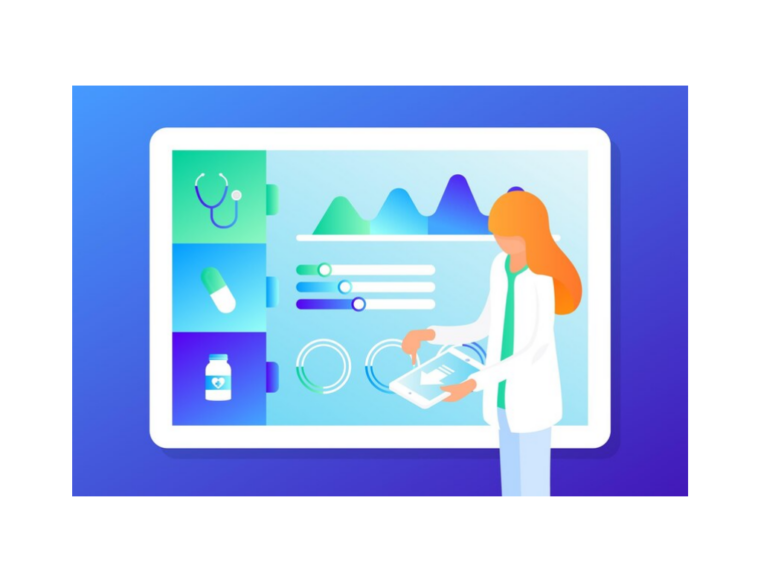Predictive Analytics in Healthcare: Revolutionizing Patient Care
Healthcare is on the cusp of a transformation driven by data and technology. At the forefront is predictive analytics in healthcare, a practice where massive amounts of patient data and historical trends are analyzed to predict and prevent adverse health events. From reducing hospital readmissions to tailoring personalized treatment plans, predictive analytics helps medical professionals make better decisions faster. In this article, we’ll dive deep into how predictive analytics works, explore its critical applications, discuss challenges, and outline future directions. By the end, you’ll see why it’s considered a game-changer for modern medicine.
1. Introduction to Predictive Analytics in Healthcare
1.1 Defining Predictive Analytics
Predictive analytics involves using statistical algorithms, machine learning models, and data mining techniques to identify patterns and forecast future outcomes. In healthcare, that means integrating data from diverse sources—Electronic Health Records (EHRs), lab results, wearable devices, and demographic databases—to build models that can anticipate patient deterioration, hospital readmissions, or even disease outbreaks.
1.2 Why Healthcare Needs Predictive Analytics
Healthcare systems are often overburdened by rising costs, an aging population, and complex disease profiles. Predictive analytics addresses these pain points by shifting from a reactive model to a proactive one. Instead of waiting for a condition to worsen, clinicians can intervene earlier with data-driven insights. Such proactive steps not only save costs but also dramatically improve patient outcomes.
2. Foundations: How Predictive Analytics Works in Healthcare
2.1 Data Collection and Integration
The first step in predictive analytics is gathering extensive, high-quality data. This typically includes:
- Clinical Data: Patient demographics, diagnoses, lab tests, imaging, physician notes, and medication history.
- Behavioral Data: Lifestyle indicators—smoking status, alcohol use, dietary habits, exercise routines.
- Social Determinants: Factors like socioeconomic status, education level, and local environmental conditions.
- Real-Time Monitoring: Wearables or bedside monitors providing continuous vital sign readings.
An effective system integrates these data points into a unified platform, often employing robust data warehouses or cloud-based solutions with strong interoperability protocols (e.g., HL7, FHIR).
2.2 Modeling Techniques
Once the data is collected, predictive models are trained using various techniques:
- Machine Learning (ML): Algorithms like random forests, gradient boosting, and neural networks learn from historical data to make predictions.
- Statistical Analysis: Traditional methods like logistic regression or survival analysis can provide interpretable insights for clinicians and policymakers.
- Deep Learning: More advanced architecture (e.g., convolutional neural networks, recurrent neural networks) can handle complex tasks such as image analysis or time-series forecasting.
2.3 Validation and Deployment
To ensure accuracy and reliability, these models undergo rigorous validation using test datasets. Performance metrics—like sensitivity, specificity, and the area under the receiver operating characteristic (ROC) curve—help gauge the model’s predictive power. Once validated, the models are integrated into clinical workflows, often through dashboards or alerts that notify healthcare professionals when a patient is at risk.
3. Key Applications of Predictive Analytics in Healthcare
3.1 Early Disease Detection
One of the most impactful uses of predictive analytics in healthcare is identifying diseases in their earliest, most treatable stages. For instance:
- Cancer Screening: ML algorithms can analyze mammogram images to spot subtle abnormalities, leading to quicker interventions.
- Diabetes Risk: Integrating lab results, BMI, and family history data can flag individuals who might develop type 2 diabetes within a few years.
3.2 Hospital Readmission Prevention
Readmission is a significant burden for both patients and healthcare systems. Predictive models analyze demographics, comorbidities, and previous admissions to estimate the likelihood of readmission. Providers can then proactively schedule follow-up calls, home visits, or medication reviews to minimize preventable readmissions.
3.3 Personalized Treatment Plans
Generic treatment protocols can be inefficient or even harmful if they don’t account for individual variability. Predictive analytics allows physicians to tailor treatments:
- Medication Efficacy: Machine learning can identify which patients are most likely to respond to a particular drug, reducing costly trial-and-error prescribing.
- Dosage Optimization: By analyzing factors like age, weight, organ function, and genetic markers, clinicians can personalize dosages for safer, more effective care.
3.4 Resource Allocation and Staffing
Hospitals operate in a delicate balance of resources—bed capacity, staffing, supplies. Predictive analytics helps forecast patient inflows, identify peak hours, and plan staffing schedules. This reduces wait times in emergency departments and prevents staff burnout.
3.5 Outbreak and Pandemic Response
In the wake of global pandemics, predictive analytics can be a lifesaver. By evaluating real-time infection data, social behavior trends, and travel patterns, healthcare authorities can anticipate hotspots and distribute resources—ventilators, vaccines, or testing kits—more effectively.
4. Benefits of Predictive Analytics in Healthcare
4.1 Improved Patient Outcomes
By catching health concerns early and personalizing treatments, predictive models significantly enhance prognosis and recovery rates. Preventive measures lower the risk of complications, positively impacting patient satisfaction.
4.2 Cost Reduction
Hospitalizations, emergency room visits, and readmissions are expensive. Predictive analytics identifies at-risk patients, enabling interventions that reduce the frequency and severity of costly episodes.
4.3 Efficient Resource Utilization
From predicting bed occupancy to anticipating supply shortages, data-driven insights improve resource allocation. Healthcare facilities can thus operate more efficiently and reduce waste.
4.4 Enhanced Patient Satisfaction
Proactive care translates to shorter wait times, quicker diagnoses, and more effective treatments—all of which improve patient perceptions and loyalty.
4.5 Evidence-Based Decision-Making
Predictive analytics fosters a culture of evidence-based medicine, where decisions are backed by large-scale data analyses instead of solely relying on clinical intuition.
Conclusion
Predictive analytics in healthcare represents a transformative step toward proactive, data-driven medicine. By leveraging extensive datasets and advanced algorithms, clinicians can detect diseases earlier, tailor treatments to individual needs, and allocate resources more effectively. Whether it’s reducing hospital readmissions or efficiently combating pandemics, predictive analytics provides a powerful toolkit for modern healthcare challenges.
This post was created with our nice and easy submission form. Create your post!





